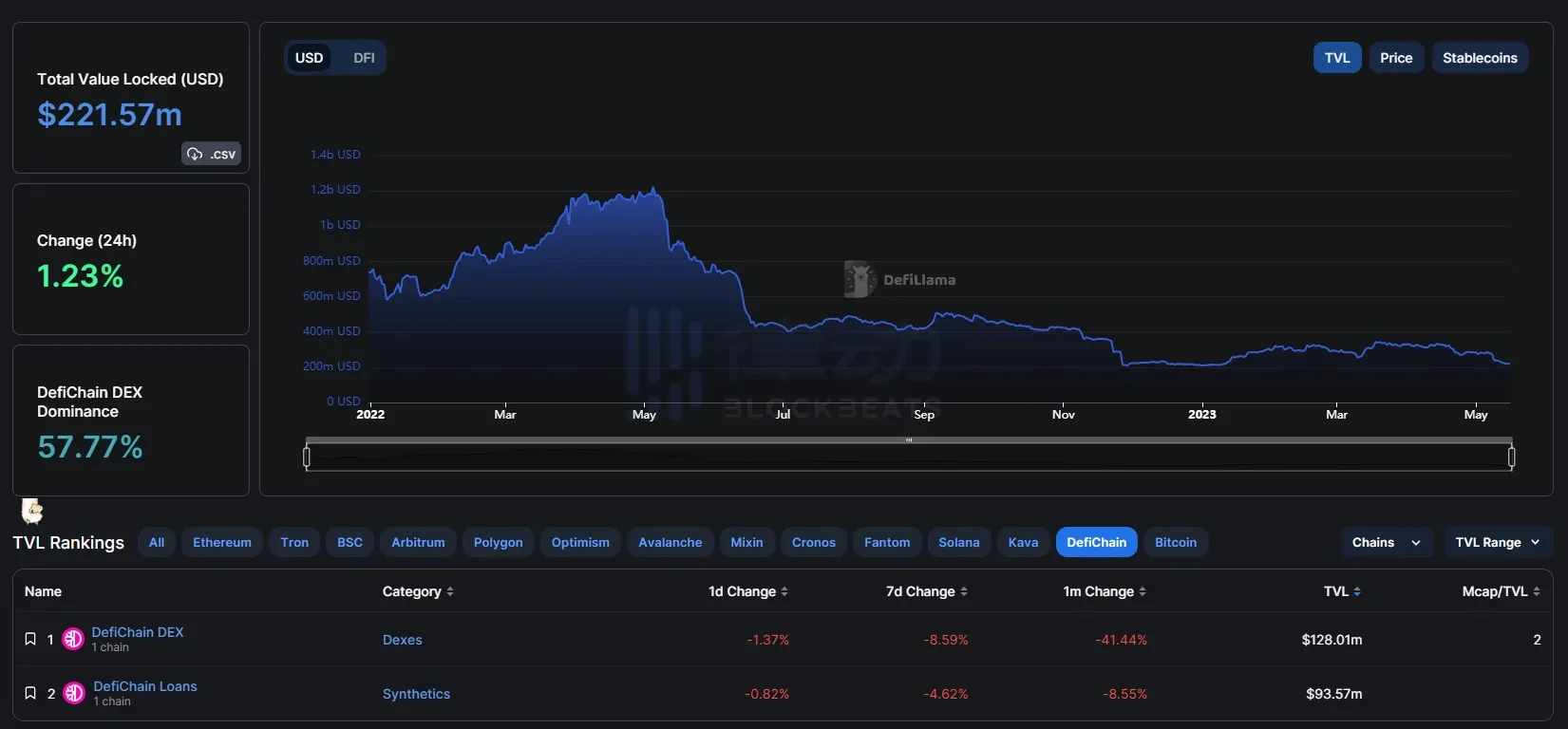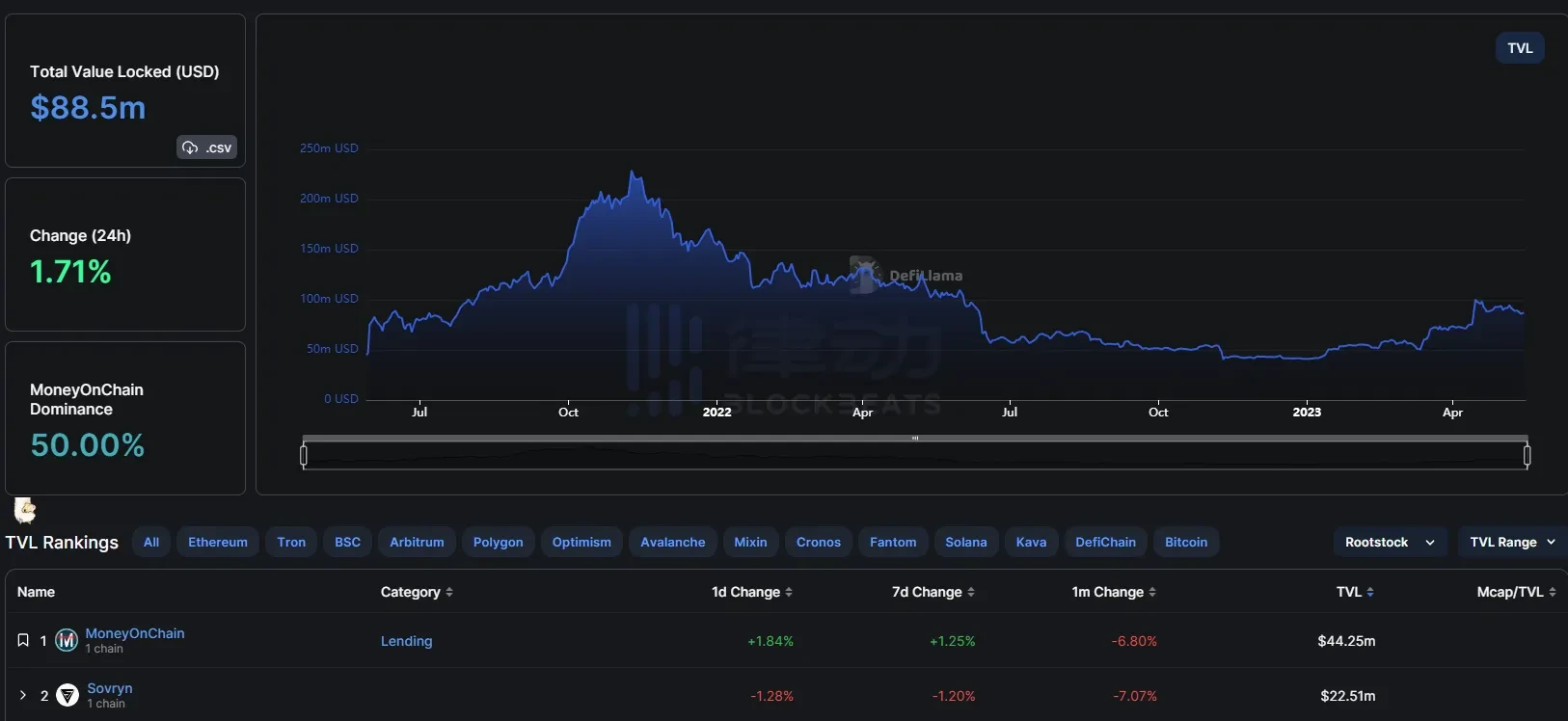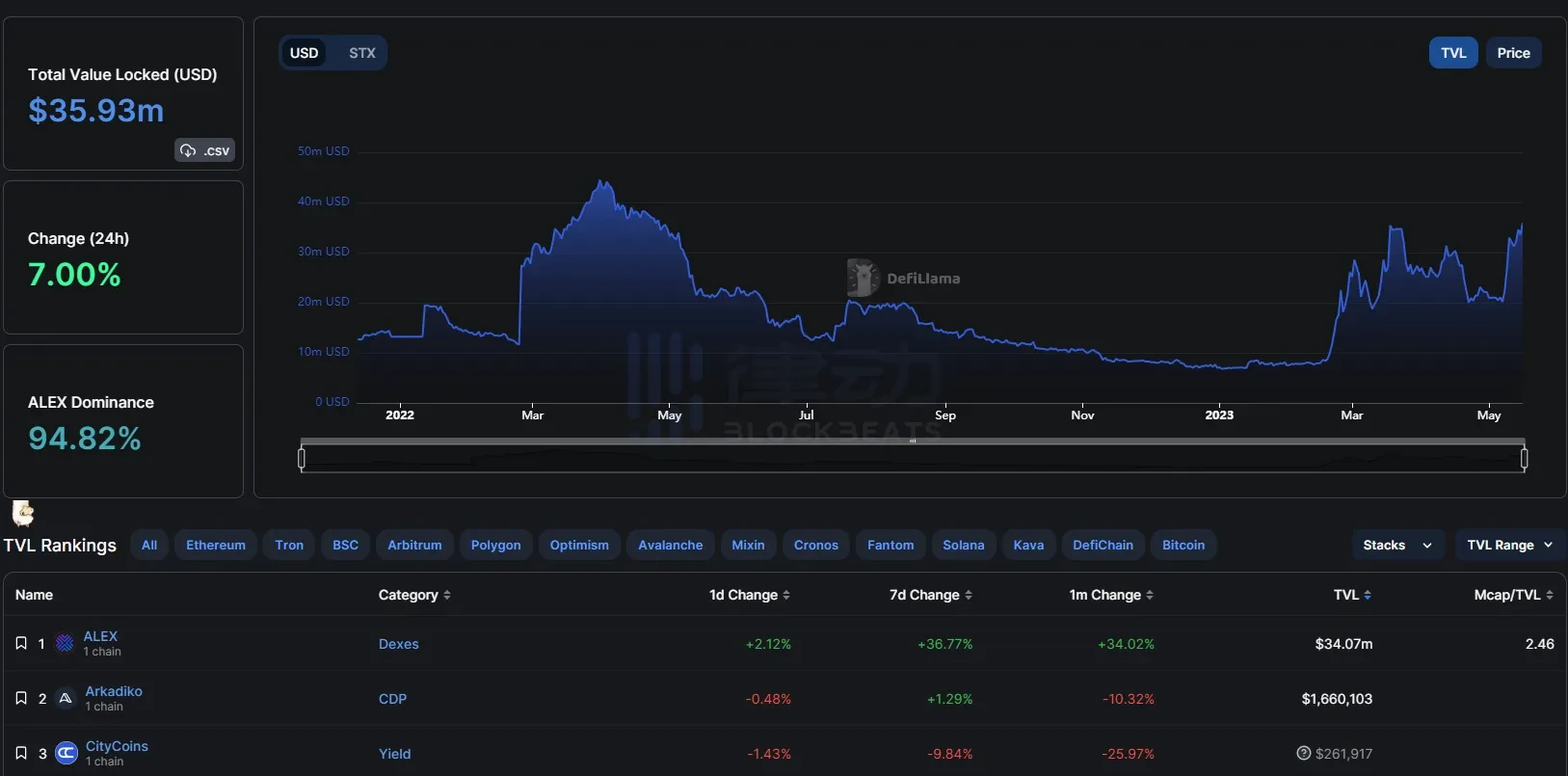Overview of Bitcoin DeFi ecosystem projects
Bitcoin DeFi ecosystem projects overviewRecently, various tracks in the Bitcoin ecosystem have shown exceptional performance. The Ordinals protocol has brought unprecedented exposure and liquidity to the Bitcoin ecosystem, Inscriptions have made Bitcoin network NFTs possible, and the launch of the BRC-20 Token standard has led the market to a new high. The congestion and high fees of the Bitcoin network have also become a hot topic recently.
Under the influence of emotions, some new projects have started to lay out the Bitcoin DeFi direction. Due to the unique nature of the Bitcoin network, there is little involvement in the DeFi field. However, even pictures and tokens can be traded, so DeFi seems to be possible. BlockBeats has compiled some Bitcoin DeFi conceptual projects:
DeFiChain
DeFiChain is an innovative DeFi platform dedicated to providing fast, intelligent, and transparent DeFi services. The platform aims to fully integrate DeFi functions into the Bitcoin ecosystem. DeFiChain itself is a hard fork of Bitcoin, with most of its programming code similar to that of Bitcoin and using Bitcoin’s consensus mechanism to protect its network. DeFiChain offers a variety of DeFi services, including decentralized lending, decentralized trading platforms, and decentralized asset management.
- Project Research | Aptos In-Depth Study Report on MOVE’s New Public Chain
- MEV vs. Flashbots: A Story of Natural Rivals and the Delicate Balance of Building DeFi Systems
- From Wealth Effect to Organic Growth: Revealing the Secrets to the Success of High-Quality Cryptocurrency Projects
According to DefiLlama data, the current DeFiChain TVL is about 221 million US dollars. DFI is the native token of the DeFiChain platform, which can be used to pay for DeFiChain network fees, earn loan interest, and participate in governance. The platform does not require permission, and anyone can participate in its ecosystem.
Rootstock
Rootstock is an intelligent contract platform guaranteed by Bitcoin miners and is currently the safest proof-of-work-based intelligent contract network. As a Bitcoin sidechain, it increases the value of the Bitcoin ecosystem by expanding the use of Bitcoin currency, and has good compatibility with Ethereum in aspects such as EVM. Decentralized applications can be written using Solidity compilers and Web3 standard libraries to achieve Ethereum compatibility. In addition, it can also expand Bitcoin payments through more on-chain space and off-chain transactions provided by the RIF Lumino payment channel network. The native token of the Rootstock sidechain is RBTC.
Rootstock TVL is currently around $88.5 million, with MoneyOnChain TVL accounting for around $44.25 million and Sovryn TVL around $22.5 million.
MoneyOnChain is a Bitcoin-backed stablecoin protocol that allows users to mint a USD-pegged stablecoin called DOC by collateralizing Bitcoin. DOC can be used for trading and borrowing on the MoneyOnChain platform.
Sovryn allows users to lend, borrow, and trade Bitcoin without the need for centralized institutions and earn interest. Sovryn is open-source and permissionless, anyone can participate in its ecosystem.
On March 17, 2023, Sovryn launched Sovryn Dollar (DLLR), a 100% Bitcoin-backed stablecoin that aggregates from other Bitcoin-backed stablecoins and is pegged to the US dollar. Sovryn Dollar maintains a large excess BTC reserve to ensure that it can always be redeemed for BTC by holders.
BadgerDAO
BadgerDAO is a project focused on building bridges between Bitcoin and DeFi in the Ethereum ecosystem. BadgerDAO aims to provide more tools and services for Bitcoin holders, allowing them to easily bring their assets into DeFi and earn from it by making Bitcoin usable as collateral for DeFi applications.
As a community-driven project, BadgerDAO allows users holding its governance token, Badger, to participate in the project’s governance and decision-making. BadgerDAO also offers incentives to developers to contribute code and innovation to the project, with the goal of promoting Bitcoin’s growth in DeFi through continuously innovative products and services.
Its core product is Sett, an asset management tool based on automated yield optimization strategies. Sett supports various Bitcoin-based assets such as Wrapped Bitcoin (WBTC), RenBTC, and tBTC. Sett allows users to deposit their assets into smart contracts and then automatically earn yield across different DeFi protocols based on pre-set strategies. BadgerDAO also launched an elastic supply currency called DIGG, whose price is pegged to Bitcoin. DIGG’s supply adjusts based on market demand to maintain price stability with Bitcoin.
Stacks
Stacks is a Layer 2 for the Bitcoin network that brings smart contract functionality to Bitcoin without modifying Bitcoin itself. Stacks adopts a pyramid approach, with a foundational settlement layer (Bitcoin) at the bottom, then adding smart contracts and programmability (Stacks) on top of it, and then adding layers on top of it to achieve scalability and speed (Hiro’s subnets).
By adopting this layered approach, it is possible to have all of the same functionality as Ethereum. Stacks, as a Layer 2 on top of Bitcoin, has some unique properties, such as its own token, which serves as an incentive mechanism to maintain a historical ledger of all its transactions and operates on its own security budget.
Current Stacks TVL is around $36 million, with decentralized exchange ALEX ($34 million TVL) being the primary contributor. Stacks allows for the construction of decentralized and censorship-resistant software using Bitcoin as the underlying settlement layer. The ultimate goal is to build a network of financial systems and decentralized software products that all use Bitcoin as their currency. The highest priority for the ecosystem currently is to integrate Stacks more closely with Bitcoin to allow for easy use with Stacks dapps.
Mintlayer
Mintlayer is a tokenization layer built on top of Bitcoin that supports interaction with BTC’s Layer 1 and Layer 2 Lightning Network. As a Layer 2 solution built on top of the Bitcoin network, Mintlayer eliminates the need for wrapped tokens or token bridges (the primary attack vector of DeFi hackers) and instead uses atomic swaps to facilitate 1:1 trading of native BTC to tokens on the Mintlayer blockchain.
Mintlayer allows Bitcoin holders to access all types of DeFi tools as well as a vast Dapps ecosystem using their native BTC. Users can trade any token in the Mintlayer ecosystem for native Bitcoin through atomic swaps, eliminating the need for trusted third parties. Mintlayer uses the Bitcoin UTXO structure instead of Ethereum, Ripple, Stellar, or other account-based models. The benefit of this approach is increased privacy and the ability to batch payments in a single transaction, saving a lot of space.
Inscribe Finance
Inscribe Finance is a recently built DeFi platform based on the BRC-20 standard that aims to bring all protocols and technologies of the ecosystem together into one platform, democratizing Bitcoin DeFi and providing the best user experience. Currently in the early stages, INSF is the native token of this platform, and it will be used as a governance token, allowing for interaction with future collaborators of the platform, among other things. According to official data, INSF was publicly sold on May 13 and sold out within 15 minutes.
We will continue to update Blocking; if you have any questions or suggestions, please contact us!
Was this article helpful?
93 out of 132 found this helpful
Related articles
- HyperCycle: An innovative blockchain architecture for AI algorithm data
- Project Research | Canvas: Focused on DeFi, Layer2 Protocol Based on StareWare ZK Rollups
- Neutron: A new cross-chain DeFi blockchain on Cosmos
- Standing at the forefront of the Meme trend, how did Ben become a cryptocurrency legend from an unknown person?
- 4.5BTC night market quote video analysis
- What is the problem with the current peak game of players less than 3 ‰ of Steam?
- Axie Infinity, a cute blockchain game









